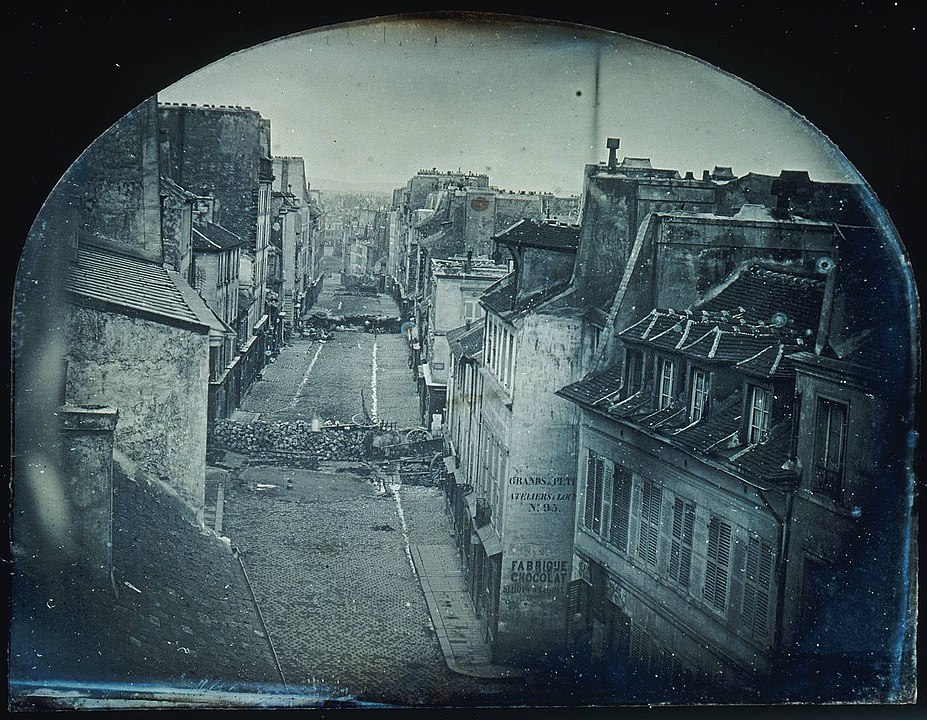
When were photographs first used in newspapers? The first photograph was published in a newspaper in 1848, but they didn’t become common for a long time after that.
Depending on the type of paper, modern newspapers have a lot of photographs. The percentage and the size of the photographs may vary depending on whether the newspaper is a tabloid or a broadsheet, but all newspapers will have photographs. Even the Financial Times, which people buy mostly for its financial information, has photographs. Online studies have shown that there is 650% more engagement with a post if there is a photograph attached to it than if there isn’t. Presumably this applies to newspapers as well.
The modern newspaper began in the 17th century. There were newsletters published even going as far back as Roman times, but they were not mass produced. This wasn’t possible until after the printing press had been invented. The birth of the printing press introduced mass printing to the world and a new wave of literacy rose to meet it. People became more interested in the world around them and more able to read about it. Newspapers began as single page newsletters, until the first real newspaper in 1604. It was called the “Relation aller Fürnemmen und gedenckwürdigen Historien”. Newspapers continued to appear through the 17th century and really came into their own in the 18th century, riding alongside the growth of the Industrial Revolution. These newspapers were all text because that was the easiest and cheapest thing to print.
In 1796, the technique of lithography was invented and it became possible to put illustrations in books and newspapers. Lithography involves drawing an image onto a stone or plate with a wax crayon or pencil. A chemical is then applied to fix the wax to the plate. Water is applied to the plate before it is inked. The water sticks to all parts of the plate, except for the wax crayon parts because wax is hydrophobic. Ink is also hydrophobic and sticks to the wax part only. It can then be printed. The problem with lithography was the blocks were difficult to combine with movable type that was set into frames the same size as the page. By the early 19th century, lithography was replaced with woodblocks. Images were carved into the woodblock, which could be set into the frame with the movable type. It became popular to have image and text on the same page. This was the first step on the way to having photographs in newspapers.
No newspaper editor could obviously have considered putting photographs in their newspaper until the camera had been invented. The first photograph was taken in 1826 by Joseph Nicéphore Niépce. He took a photo of the town outside his bedroom window and he used an 8 hour exposure time. By 1839, Louis Daguerre had invented the Daguerreotype, a photo camera that reversed images so that they were positive images, not negatives. It wasn’t a very practical camera, but people saw the potential and the field of photography grew rapidly, The camera improved incredibly quickly.
The new medium of photography began to take off and it wasn’t long before a photo was printed in a newspaper. In July 1848, a French weekly newspaper called L’Illustration printed a photograph of a worker’s strike on the streets of Paris. The photograph of the strike was taken in June, but it took a while to be developed and then it had to be engraved to be printed. L’Illustration carried on groundbreaking by printing engravings of photos of the Crimean War as well. The Crimean War was notable for having the first official war photographer, Roger Fenton, and the first official war reporter, William Howard Russell.
Some newspapers started to carry photographs, but the trend didn’t take off quickly. Photographs were engraved, which took a long time, and they were used sparingly to illustrate text. The text was still considered the most important thing. This changed in the 1870s and 1880s because cameras became smaller and easier to carry, and a new way of printing photographs was developed. This was halftone. It was possible to engrave a photograph onto a block to be printed, but it took a long time and it was difficult to reproduce the subtlety and the shading of the image. Halftone could do that. Halftone is an image made from dots of ink. The dots start as solid black, then get smaller and more spread out as the image gets lighter until there is only the white paper. This method could reproduce the shading of a photograph.
By 1900, photographs were expected in newspapers and they had become a medium in their own right. The photographs told a story, rather than merely illustrating the text. The invention of offset printing in 1875 improved to the point that by 1907, photographs could be easily and cheaply printed in newspapers. They had come a long way in such as short time. And this is what I learned today.
Image By Thibault, (1830-1927) – L’Histoire par l’image, Public Domain, https://commons.wikimedia.org/w/index.php?curid=19160084
Sources
https://en.wikipedia.org/wiki/Photojournalism
https://en.wikipedia.org/wiki/Halftone
https://www.loc.gov/rr/print/guide/port-2.html
https://phsne.org/the-first-photograph-published-in-a-newspaper-1848/
https://www.linkedin.com/pulse/power-picture-how-images-drive-engagement-fran-jakubowicz-1f/
https://www.pixsy.com/photography/camera-invention-photography-history
https://www.psprint.com/resources/history-of-the-printed-newspaper/
